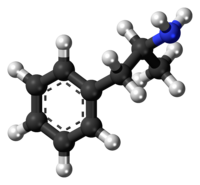
Photo from wikipedia
We read with interest the valuable comments and proposals that Rajabally made on our work entitled “Systematic literature review of burden of illness in chronic inflammatory demyelinating polyneuropathy (CIDP)” [1]… Click to show full abstract
We read with interest the valuable comments and proposals that Rajabally made on our work entitled “Systematic literature review of burden of illness in chronic inflammatory demyelinating polyneuropathy (CIDP)” [1] in which we perform a systematic review of the literature to analyze the burden of disease in CIDP. We agree with Rajabally that intravenous immunoglobulins (IVIg) are one of the main drivers of disease burden in CIDP, both humanistically and economically [2]. The need for venous access, repeated dosing in a clinical setting (or home nursing services) and the cost are properly mentioned as features of IVIg treatment that determines significant burden for the patients and the cost for their healthcare systems [3]. Subcutaneous immunoglobulins (ScIg) help reduce some of those limitations of IVIg, and that is probably driving patients’ preference for ScIg in the studies listed, but the cost and the need of repeated dosing are not improved with subcutaneous administration. Another therapeutic strategy to decrease the burden (humanistic and economic) of IVIg treatment is to periodically reduce the dose of IVIg and include attempts to withdraw the treatment [2,4–6]. This strategy is properly listed in the discussion of our report as a possible solution to decrease the burden of IVIg therapy. However, we must acknowledge that our search strategy failed, for the methodological reasons explained below, to identify a report by Rajabally and Afzal in which the adoption of an individualized protocol for IVIg dosing led to reduced costs and infusion time duration. This therapeutic strategy, proposed also by other groups [4,5], may lead to a decrease in treatment-associated burden in CIDP but cost, frequency and duration of infusions remain high. We have reviewed the search strings and search limits to clarify the regrettable omission of this relevant study. Although the study is clearly identified by the search string used in the literature search (Supplementary Information 1) and it clearly falls within the “Study focus”, it drops from the search results when applying the “Study type” limit, probably due to the categorization of the study. We acknowledge this unfortunate outcome but would like to highlight that, despite this omission, the main conclusion of this study (and the two other reports proposing similar strategies), that individualized regimens can decrease cost and burden for patients, has been properly mentioned as Rajabally acknowledges in his letter. In developing countries, IVIg use is much less frequent and, thus, disease burden is driven by other disease-associated problems, including the chronic use of corticosteroids. Rajabally is also concerned by the detailed description of the diverse side effects that corticosteroids determine in comparison with a more superficial mention on the burden of immunoglobulins, particularly to thromboembolic complications. We agree that immunoglobulins can also determine a significant burden on patients’ lives and are also associated with important side effects, described in detail in Supplementary materials (3). However, the sentence to which Rajabally alludes refers to “common” side effects associated to corticosteroids. IVIg-associated thromboembolic complications, although certainly relevant, cannot be considered common by any classification [7]. In agreement with that, uncommon corticosteroid side effects, which may also be fatal (gastrointestinal bleeding, acute psychiatric syndromes, bone fractures...), are not listed in the text. We acknowledge that headache, pyrexia, chills or other common side effects of IVIg could have been listed, but those are side effects mainly related to infusion and not persistent side effects, * L. Querol [email protected]
Journal Title: Journal of Neurology
Year Published: 2020
Link to full text (if available)
Share on Social Media: Sign Up to like & get
recommendations!